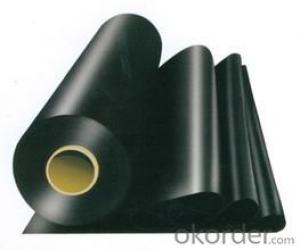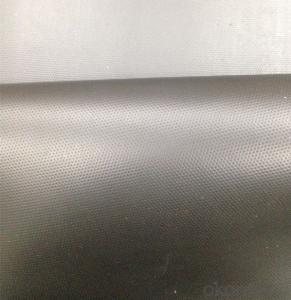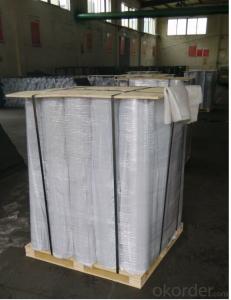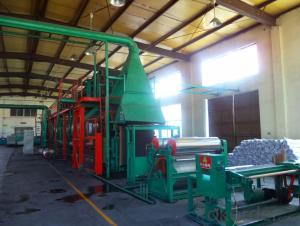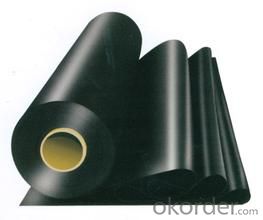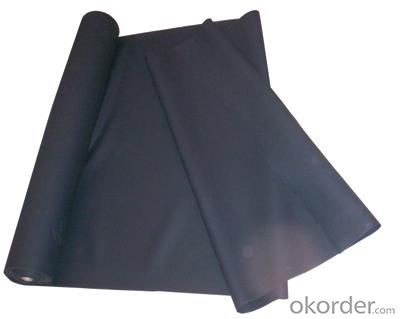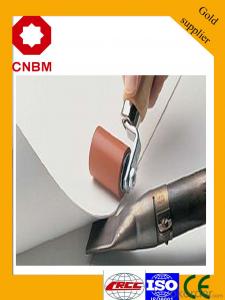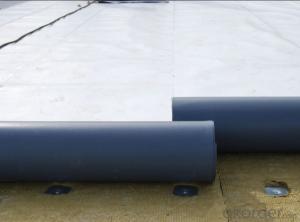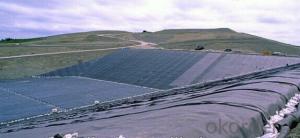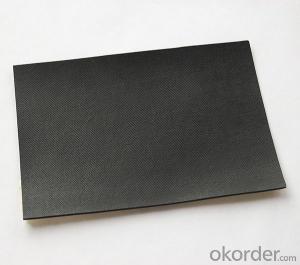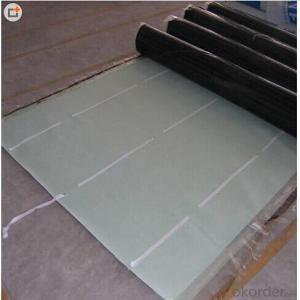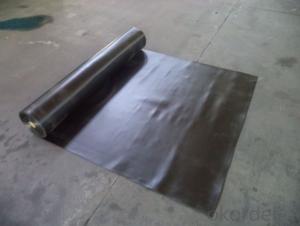EPDM Rubber Membrane Waterproof Roll 1.2m, 2m, 4m
- Loading Port:
- Qingdao
- Payment Terms:
- TT OR LC
- Min Order Qty:
- 4000 m²
- Supply Capability:
- 210000 m²/month
OKorder Service Pledge
OKorder Financial Service
You Might Also Like
EPDM Rubber Waterproof Membrane
Product Instruction:
EPDM waterproof membrane is made from ternary ethylene-propylene rubber,which is designed for waterproofing of exposed and non-exposed applications. EPDM waterproof membrane is of high elasticity among high polymer waterproof materials and becomes a world-popular waterproofing material.
CNBM own the wold-advanced equipment of cold feeding extrusion and continuous vulcanization technology. With the best performance among high polymer waterproof materials, EPDM is of exceptional elasticity and will not split or cracked under normal building movement.
Product Features:
-Excellent weather-ability, durability and size stability
-Good adaptability to high and low temperature, UV resistant and anti-corrosion
-High tensile strength and good elongation, accommodating to structure movement
-Easy installation, solid joint, and mo environmental pollution
-Good rooting penetration resistance
-Service life up to 50 years
Applications:
-Roof, basement, tunnel, pond liner, dam
-Industrial and civil building waterproofing
-Geosynthetic liner for fish ponds, swimming pools, channels, irrigation system
-Especially suitable for projects with high requirement in durability, anti-corrosion and deformation
Specifications:
-Width of roll: 1.2m, 2m, 4m
-Length of roll: 20m, 30m or customized
-Thickness of membrane: 1.2mm, 1.5mm, 2mm
-Type: vulcanized EPDM or welding EPDM
-Application: roof, basement, pond, lake, swimming pool, steel structure roofing, underground, tunnel, etc
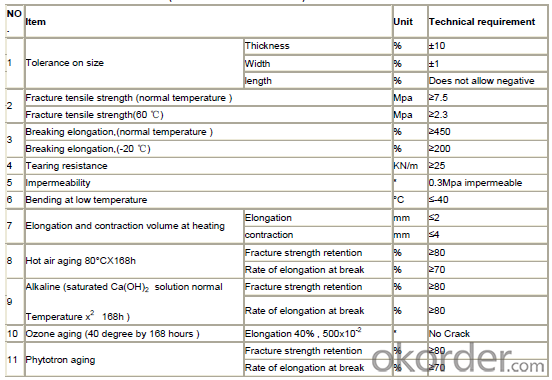
FAQ:
1. Is your EPDM waterproof membrane the real rubber?
Yes, our EPDM membrane is made from top quality rubber, which is imported from America. We support samples for testing, or testing in our factory.
2. How's your products quality?
Our EPDM is with the top quality at home and abroad. Our quality is much higher than Chinese standard. Our product is widely used in Chinese Central government projects. And it's also accpted by customers all over the world, such as EU, USA, Astrulia, etc.
3. What's the service life of your EPDM membrane?
The service life of our EPDM membrane is more than 50 years.
4.What's your MOQ?
Our MOQ is 3000M2.
5. What's your product ability of EPDM membrane?
We own the largest EPDM production line in China. Our product ability of EPDM membrane reaches 2 million square meter per year.
Photos:
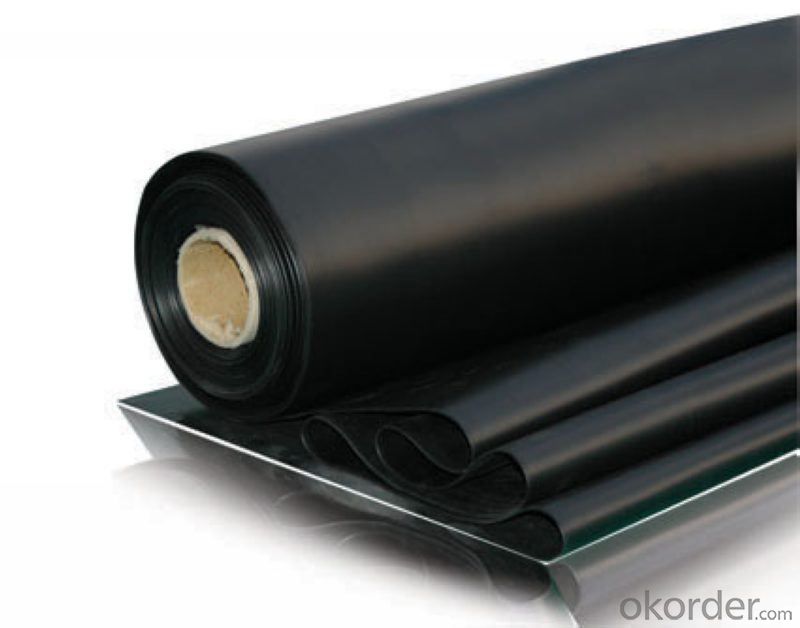
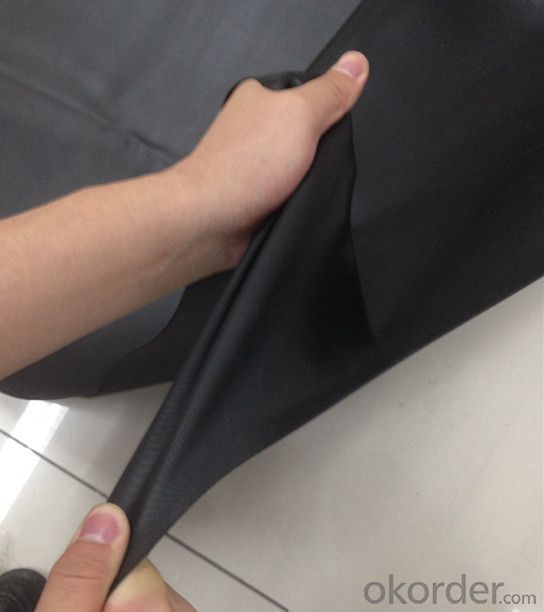


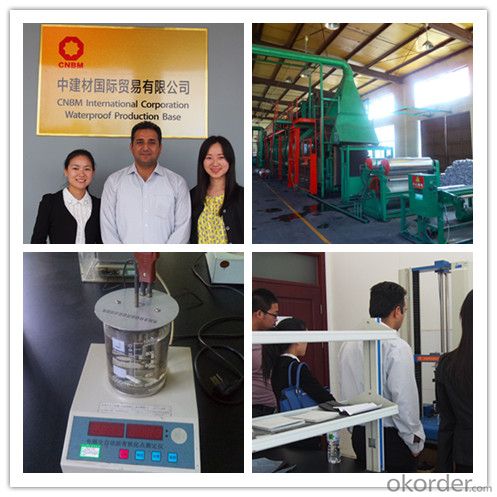
- Q: Can a waterproofing membrane be used in coastal areas?
- Indeed, the utilization of a waterproofing membrane is viable in coastal regions. Given their susceptibility to copious amounts of moisture and water exposure, it becomes imperative to implement efficient waterproofing measures. By appropriately installing and upkeeping a waterproofing membrane, one can establish a protective barrier, effectively thwarting water infiltration and averting structural damage while ensuring their longevity. Nevertheless, it is crucial to opt for a membrane specifically tailored for coastal environments as they exhibit heightened resistance to saltwater and possess superior durability to withstand the harsh coastal conditions. Moreover, routine inspection and maintenance are imperative to guarantee the continued efficacy of the waterproofing membrane in coastal areas.
- Q: How do waterproofing membranes prevent water leakage?
- Waterproofing membranes function as a barrier between the surface and water, effectively preventing any leakage. These membranes, which can be made of bitumen, PVC, or EPDM, are typically applied in liquid or sheet form. The key mechanism by which waterproofing membranes halt water leakage is through the creation of a continuous and impermeable layer. This layer acts as a physical obstacle, preventing water from seeping through the surface. Moreover, the membranes are carefully applied to cover the entire surface, including joints, cracks, and seams, leaving no vulnerable areas for water penetration. Another important aspect of waterproofing membranes is their exceptional adhesive properties, enabling them to form a strong bond with the surface. This ensures that there are no gaps or spaces through which water can enter. Furthermore, by adhering firmly to the surface, the membranes also serve as a barrier against the movement of water vapor, effectively preventing moisture buildup and potential structural damage. Moreover, waterproofing membranes are specifically designed to offer high resistance to water and moisture. Their composition ensures that they do not degrade or deteriorate when exposed to water, guaranteeing their longevity and effectiveness. This resistance to water also prevents the membrane from becoming permeable over time. To sum up, waterproofing membranes effectively prevent water leakage by establishing a continuous and impermeable barrier on the surface. They cover the entire surface, adhere securely to eliminate gaps, and exhibit resilience against water and moisture. By implementing these measures, waterproofing membranes provide reliable protection against water infiltration and subsequent damage.
- Q: Is the waterproofing membrane an insulating material?
- Insulation board: plastic plate is made of plastic sheet, plastic for the synthesis of polymer compounds, can be free to change the body style. Plastic is the use of monomer raw materials to synthesis or condensation reaction polymerization of materials, synthetic resin and filler, plasticizers, stabilizers, lubricants, colorants and other additives, and its main component is synthetic resin.
- Q: Can a waterproofing membrane be used in elevator pits or sump pits?
- Yes, a waterproofing membrane can be used in elevator pits or sump pits to prevent water infiltration and protect the structure from potential damage caused by moisture.
- Q: Are waterproofing membranes resistant to gasoline vapors?
- Yes, waterproofing membranes are generally resistant to gasoline vapors. Most waterproofing membranes are composed of materials such as bitumen, PVC, or EPDM, which are known to have good resistance against various chemicals, including gasoline. These membranes are designed to provide an impermeable barrier, preventing the penetration of liquids and vapors, including gasoline. However, it is important to note that the level of resistance may vary depending on the specific type and brand of waterproofing membrane used. It is recommended to consult with the manufacturer or supplier to ensure that the chosen membrane is suitable for the specific application and expected exposure to gasoline vapors.
- Q: Can a waterproofing membrane be used for plant rooms or mechanical spaces?
- Yes, a waterproofing membrane can be used for plant rooms or mechanical spaces. Plant rooms and mechanical spaces are areas where equipment, machinery, or systems are installed, and they often contain pipes, tanks, or other components that require protection from water damage. A waterproofing membrane is a durable, flexible, and watertight barrier that can be applied to surfaces such as walls, floors, or ceilings to prevent water infiltration. By using a waterproofing membrane in plant rooms or mechanical spaces, you can ensure the longevity and functionality of the equipment and systems by protecting them from water leaks or moisture damage. Additionally, a waterproofing membrane can also provide a vapor barrier, preventing the buildup of condensation or humidity, which can be detrimental to sensitive equipment.
- Q: Can a waterproofing membrane be used in ponds or reservoirs?
- Yes, a waterproofing membrane can be used in ponds or reservoirs. Waterproofing membranes are designed to create a barrier that prevents water from seeping through, making them an effective solution for creating a watertight seal in ponds or reservoirs.
- Q: Does a waterproofing membrane affect the structural integrity of a building?
- No, a waterproofing membrane does not affect the structural integrity of a building. Its primary function is to prevent water penetration and protect the building from moisture damage, without compromising the overall strength or stability of the structure.
- Q: Can a waterproofing membrane be used for shipping containers or cargo holds?
- Yes, a waterproofing membrane can be used for shipping containers or cargo holds. It acts as a protective layer that prevents water from entering the containers or cargo holds, keeping the contents dry and protected during transportation.
- Q: Can a waterproofing membrane be used on tunnels with emergency exits?
- Certainly! Waterproofing membranes can be applied to tunnels that have emergency exits. It is strongly advised to utilize a waterproofing membrane in these tunnels to prevent water infiltration and safeguard the integrity of the exits. These membranes are specifically designed to establish a barrier against water and moisture, guaranteeing that the tunnels stay dry and unharmed by water. This is particularly crucial for emergency exits, as they must remain accessible and operational under all circumstances. By installing a waterproofing membrane, the tunnels can be adequately shielded from potential water ingress, thus ensuring the safety and functionality of the emergency exits.
Send your message to us
EPDM Rubber Membrane Waterproof Roll 1.2m, 2m, 4m
- Loading Port:
- Qingdao
- Payment Terms:
- TT OR LC
- Min Order Qty:
- 4000 m²
- Supply Capability:
- 210000 m²/month
OKorder Service Pledge
OKorder Financial Service
Similar products
Hot products
Hot Searches
Related keywords
